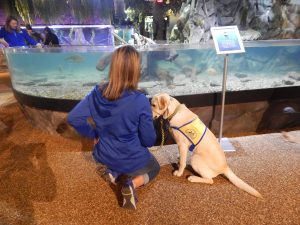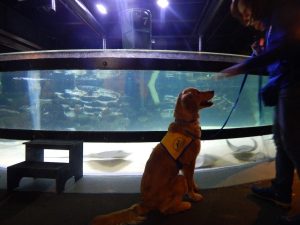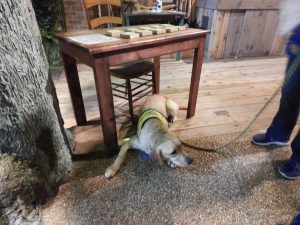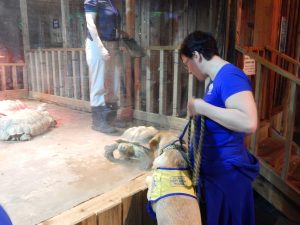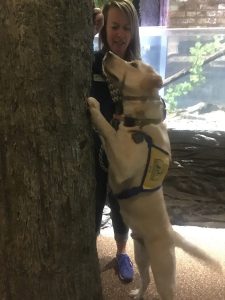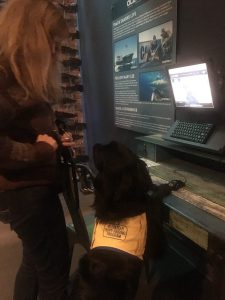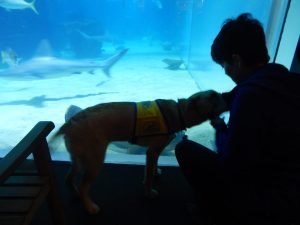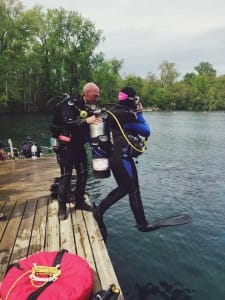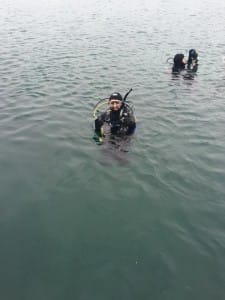World Oceans Day
Imagine living in a beautiful, underwater world where there’s nothing but the rays of the sun and your fellow aquatic friends surrounding you. Then the next thing you know, you’re surrounded by a sea of… what’s that? Pollution. Trash floating everywhere. There’s nothing more alarming to marine life than being caught in a fishing net or consuming litter that is extremely harmful to the animal’s life.
To get a glimpse of how harmful pollution can be for the animals, here are some alarming statistics. Plastic takes about 400 years to degrade in the water. Remember that favorite can of soda you love drinking? Well that takes about 200 years to degrade in the ocean. In the meantime, the pollution just hangs around, harming any animal in its way. According to Plastic Oceans, “1 in 3 species of all marine mammals have been found entangled in marine litter.” As tourists and even local people, we have to be more mindful of our actions and what we can do to protect our oceans.
Another dangerous effect of trash floating and sinking in the ocean are the chemicals that the pollution can emit. Fish and other animals will consume these chemicals, potentially killing them and even causing negative side effects to humans. How you ask? The fish consume the marine litter. We catch the fish and then we eat the fish. Now we have the same chemicals in our body that make us sick. The thing is, the animals don’t know what they’re about to be tangled in or consume. We know exactly what we’re putting into the ocean, but also may not realize the effects it has on our aquatic friends. So what can you do to help revive our oceans and save our underwater world?
We as humans and ocean lovers need to be more conscious of pollution in the ocean and on the beaches. By picking up all of your trash, you’re reducing the chance of the waves snatching it during high tide and being carried into the ocean. If you see trash laying on the beach or in the ocean, don’t be afraid to grab it and throw it away or recycle it. Even the most simple act of picking up one water bottle can lead to a whole movement of reduced pollution and one more sea creature living a longer life. No matter who or how old you are, you can make a difference in protecting marine life making our oceans a cleaner and safer place.




 African Sideneck Turtle
African Sideneck Turtle Yellow-Spotted Amazon River Turtle
Yellow-Spotted Amazon River Turtle Ohio Spotted Turtle
Ohio Spotted Turtle
 A wildlife rehabilitator is a person who has acquired the knowledge and permits, and understands the commitment involved in caring for an orphaned or injured animal. In Ohio, it is actually illegal to rear wildlife without a permit. This is for the protection of not only the wildlife, but also the people who wish to help. Wildlife can carry bacteria and viruses that are harmful to people; these types of illnesses are called zoonotic diseases. The wildlife rehabilitator would have gone through training to be able to identify the symptoms of such diseases and can take measures to protect oneself and provide the proper care for the animal.
A wildlife rehabilitator is a person who has acquired the knowledge and permits, and understands the commitment involved in caring for an orphaned or injured animal. In Ohio, it is actually illegal to rear wildlife without a permit. This is for the protection of not only the wildlife, but also the people who wish to help. Wildlife can carry bacteria and viruses that are harmful to people; these types of illnesses are called zoonotic diseases. The wildlife rehabilitator would have gone through training to be able to identify the symptoms of such diseases and can take measures to protect oneself and provide the proper care for the animal. Further, baby animals require highly specific diets vital to their growth and development. Cow’s milk from the store is not even a close substitute for most of the wildlife a person would come across. Just imagine the tiny bones of a squirrel and the functionality they provide that animal when dashing through the trees. The ingredients in cow milk are simply not suited for helping form those little skeletons. Likewise, feeding worms to a baby bird whose diet should consist of mostly seed is not only detrimental to its growth, but often fatal. An animal that is fed the wrong diet will quite frankly starve to death because it is not getting the nutrients required for its species. Wildlife rehabilitators have the permits, education, and experience to provide the proper care for an animal that needs help.
Further, baby animals require highly specific diets vital to their growth and development. Cow’s milk from the store is not even a close substitute for most of the wildlife a person would come across. Just imagine the tiny bones of a squirrel and the functionality they provide that animal when dashing through the trees. The ingredients in cow milk are simply not suited for helping form those little skeletons. Likewise, feeding worms to a baby bird whose diet should consist of mostly seed is not only detrimental to its growth, but often fatal. An animal that is fed the wrong diet will quite frankly starve to death because it is not getting the nutrients required for its species. Wildlife rehabilitators have the permits, education, and experience to provide the proper care for an animal that needs help.







